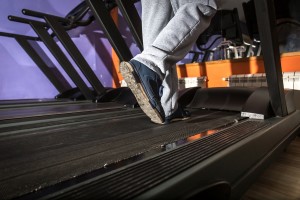Exercise training corrects impaired diabetic heart function
Our heart’s left ventricle empties on each heartbeat. In many people with diabetes, it takes longer for the heart to refill with blood between heartbeats than in healthy individuals. But exercise can fix the problem, a new study shows.
DIABETES: About half of everyone who has type 2 diabetes also has diastolic dysfunction, which can eventually develop into heart failure.
Diastolic dysfunction means that the heart’s ability to relax and fill with blood between heartbeats is impaired. The heart is then less able to pump enough blood into the body with each beat, and needs to work harder even though the pumping function itself is still intact.

Both moderate and intensive training give diabetes patients improved cardiac function. Illustration: Thinkstock
“Impaired diastolic heart function can be reversed, and our findings focus on the effect of exercise to prevent cardiovascular disease in this group of patients,” says Siri Marte Hollekim-Strand, who is a PhD candidate at NTNU and first author of the recently published study.
- You might also like: Hormone may offer new approach to diabetes
Heart twists like a washcloth
As the left ventricle contracts and sends blood into the body, it makes a twisting motion, akin to what happens when you wring out a washcloth. The new study shows that when the heart chamber refills in between heartbeats– called the untwist – that rate is slower in patients with Type 2 diabetes and diastolic dysfunction than in healthy individuals.
“Energy is stored when the heart twists. This energy gets used during the untwisting and allows the blood to be drawn into the heart in the first part of the phase between two heartbeats, called the diastole. The untwist rate is an excitation heart ultrasound measurement that probably has great significance for the early diastolic heart phase,” says physician and researcher Charlotte Björk Ingul at the Department of Circulation and Medical Imaging at NTNU. Ingul is the study’s last author.
“Our pilot study suggests that exercise can normalize some cardiac function impairments in this patient group,” adds Hollekim-Strand.
- You might also like: Mirror, mirror, will I have a heart attack?
Both moderate and intensive training helped

One group trained at home with moderate intensity for half an hour every day, according to current recommendations, while the other group did intensive 4×4 intervals on the treadmill three times a week throughout the training period. Photo: Thinkstock
The researchers examined the twist of the left ventricle using echocardiography, also called an echo test or heart ultrasound. It turned out that most twist rate measurements at rest were similar for the study’s diabetic patients and the 37 healthy control subjects with approximately the same age, gender and BMI as the diabetes group. The exception was the “time to peak untwist rate” measurement.
“Before the training the untwist was significantly delayed in diabetic patients, but after three months of training this measurement was also the same as in the control subjects without diabetes,” says Hollekim-Strand.
The 37 diabetes patients, who were randomly distributed between two training groups, trained for 12 weeks. One group trained at home at moderate intensity for half an hour every day, according to current recommendations of the Norwegian Directorate of Health. The second group did intensive 4 × 4 interval training on the treadmill three times a week throughout the study period. The untwist rate of both training groups improved equally.
“Untwist rate may become an important marker of diastolic heart function in the future, but that will require 3D ultrasound with high resolution for better measurement methods than we have today. Right now we have to combine many different ultrasound measurements for diastolic heart function to confirm that function is impaired,” says Ingul.
Reference:
Hollekim-Strand, S. M., Høydahl, S. F., Follestad, T., Dalen, H., Bjørgaas, M. R., Wisløff, U., & Ingul, C. B. (2016). Exercise Training Normalizes Timing of Left Ventricular Untwist Rate, but Not Peak Untwist Rate, in Individuals with Type 2 Diabetes and Diastolic Dysfunction: A Pilot Study Journal of the American Society of Echocardiography, 3 March 2016 (online)




